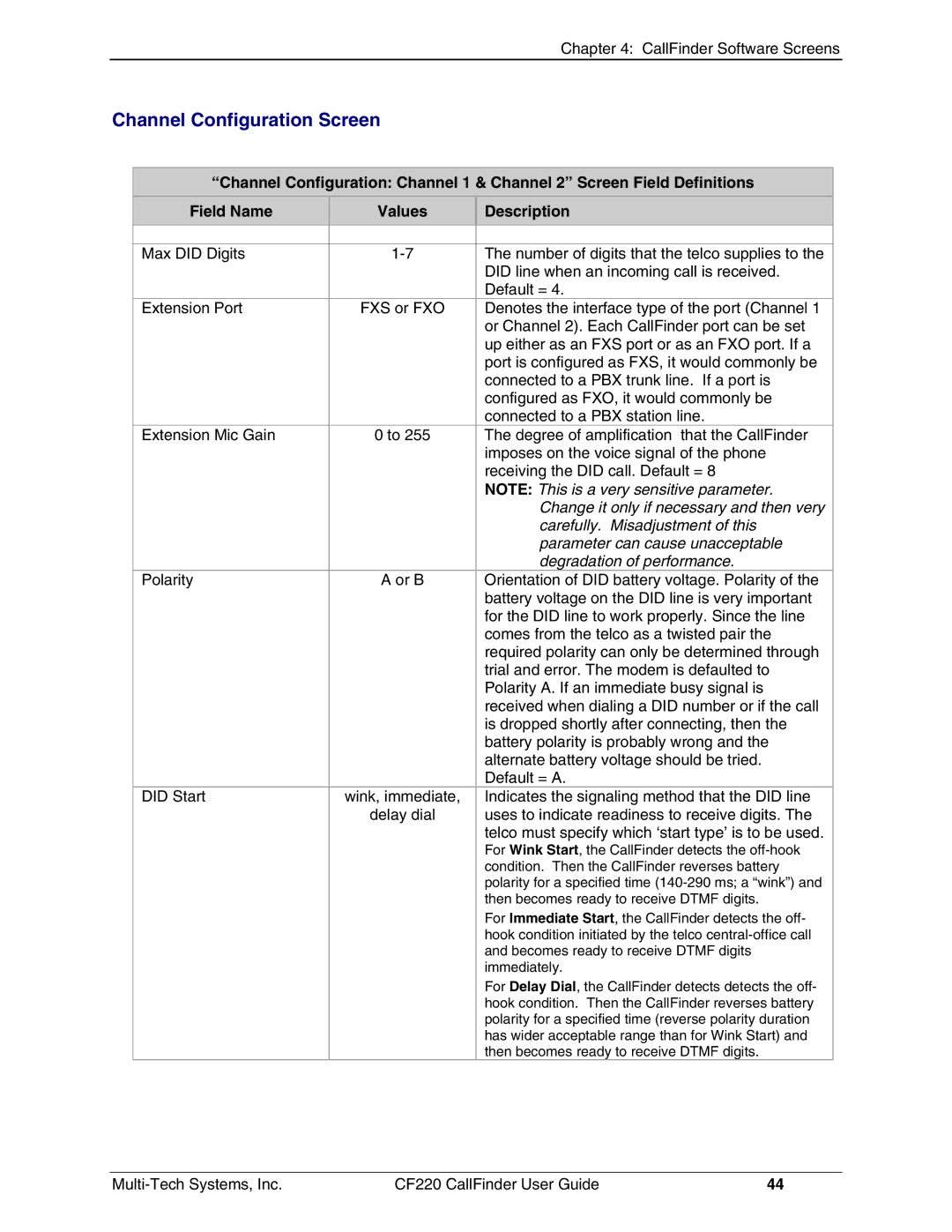
Chapter 4: CallFinder Software Screens
Channel Configuration Screen
“Channel Configuration: Channel 1 & Channel 2” Screen Field Definitions
Field Name | Values | Description |
|
|
|
|
|
|
Max DID Digits | The number of digits that the telco supplies to the | |
|
| DID line when an incoming call is received. |
|
| Default = 4. |
Extension Port | FXS or FXO | Denotes the interface type of the port (Channel 1 |
|
| or Channel 2). Each CallFinder port can be set |
|
| up either as an FXS port or as an FXO port. If a |
|
| port is configured as FXS, it would commonly be |
|
| connected to a PBX trunk line. If a port is |
|
| configured as FXO, it would commonly be |
|
| connected to a PBX station line. |
Extension Mic Gain | 0 to 255 | The degree of amplification that the CallFinder |
|
| imposes on the voice signal of the phone |
|
| receiving the DID call. Default = 8 |
|
| NOTE: This is a very sensitive parameter. |
|
| Change it only if necessary and then very |
|
| carefully. Misadjustment of this |
|
| parameter can cause unacceptable |
|
| degradation of performance. |
Polarity | A or B | Orientation of DID battery voltage. Polarity of the |
|
| battery voltage on the DID line is very important |
|
| for the DID line to work properly. Since the line |
|
| comes from the telco as a twisted pair the |
|
| required polarity can only be determined through |
|
| trial and error. The modem is defaulted to |
|
| Polarity A. If an immediate busy signal is |
|
| received when dialing a DID number or if the call |
|
| is dropped shortly after connecting, then the |
|
| battery polarity is probably wrong and the |
|
| alternate battery voltage should be tried. |
|
| Default = A. |
DID Start | wink, immediate, | Indicates the signaling method that the DID line |
| delay dial | uses to indicate readiness to receive digits. The |
|
| telco must specify which ‘start type’ is to be used. |
|
| For Wink Start, the CallFinder detects the |
|
| condition. Then the CallFinder reverses battery |
|
| polarity for a specified time |
|
| then becomes ready to receive DTMF digits. |
|
| For Immediate Start, the CallFinder detects the off- |
|
| hook condition initiated by the telco |
|
| and becomes ready to receive DTMF digits |
|
| immediately. |
|
| For Delay Dial, the CallFinder detects detects the off- |
|
| hook condition. Then the CallFinder reverses battery |
|
| polarity for a specified time (reverse polarity duration |
|
| has wider acceptable range than for Wink Start) and |
|
| then becomes ready to receive DTMF digits. |
CF220 CallFinder User Guide | 44 |
